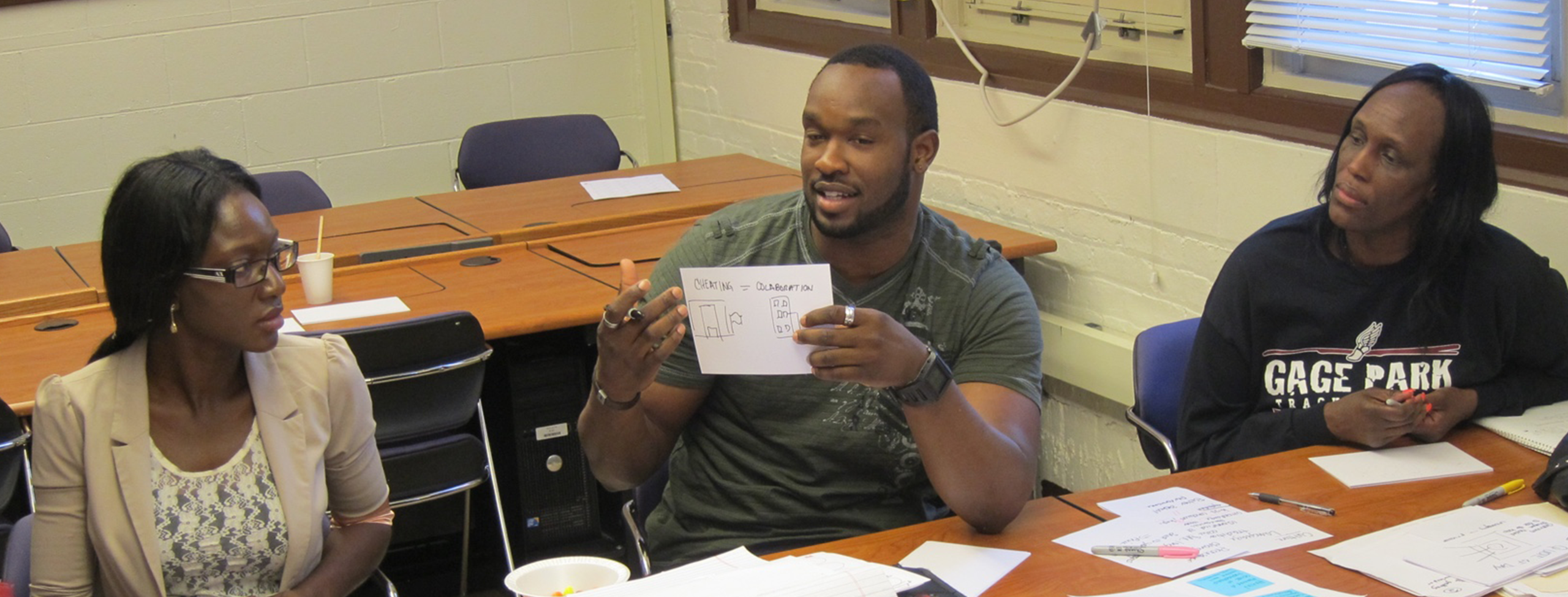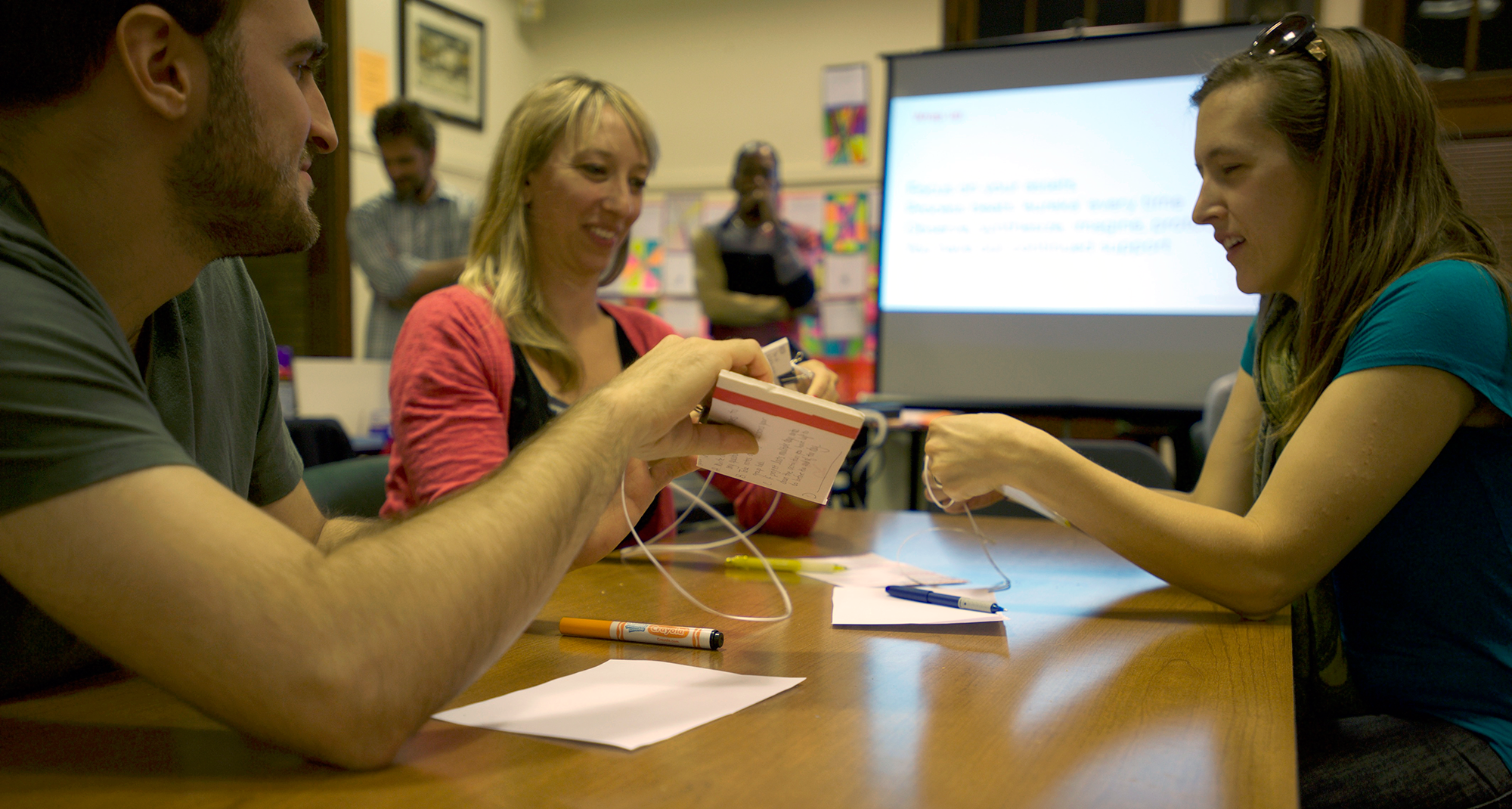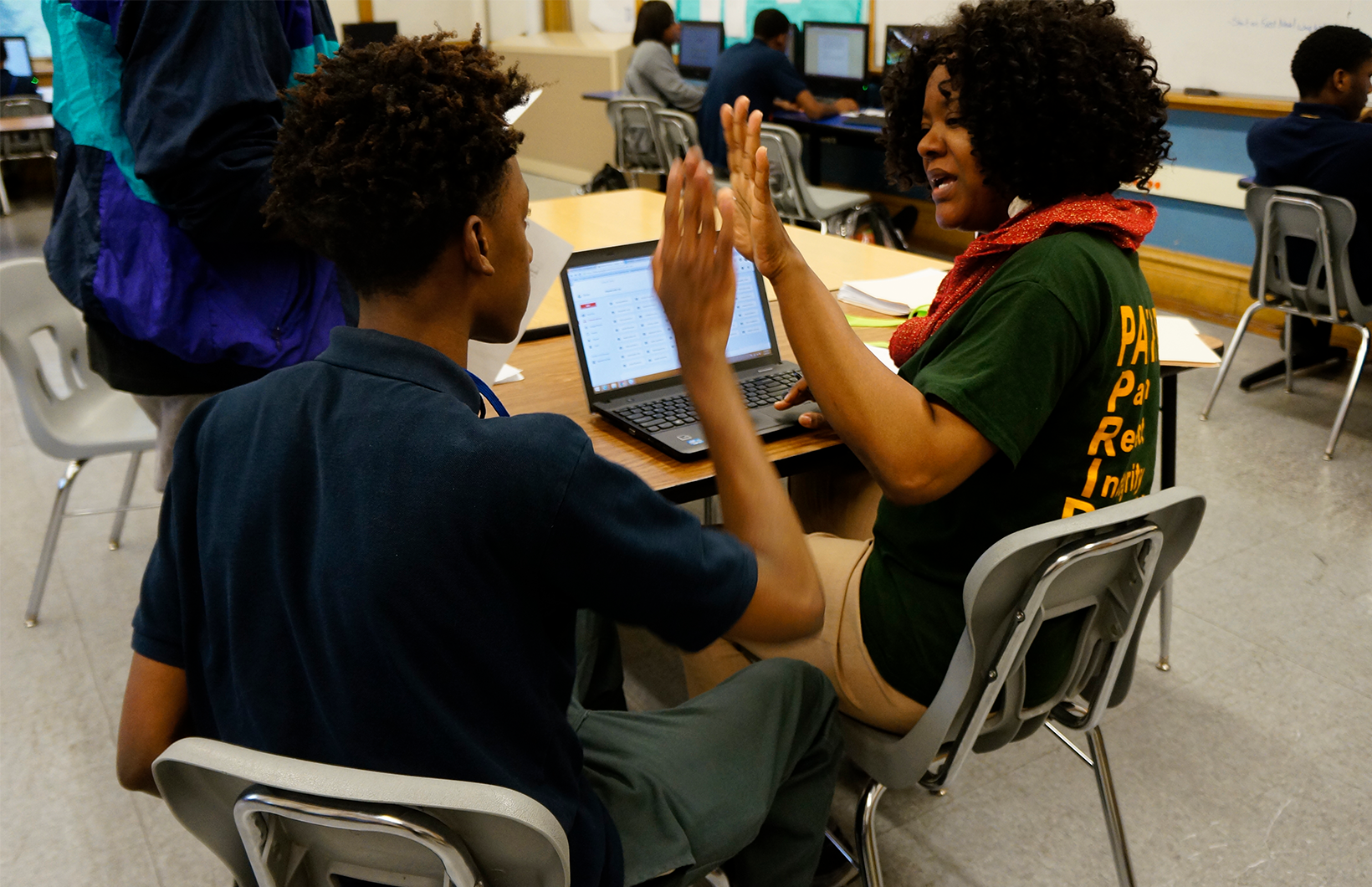
Client
Chicago Public Schools is the third-largest school district in the United States, with more than 600 schools providing education to approximately 400,000 children.
Geography
Chicago, IL
Topic Areas
Education
Youth Development
Project Types
Capacity Building
Hope can be hard to find in a sea of grim data. In 2013, school leaders had plenty of numbers quantifying the challenges of school climate and culture. But rather than dictating a universal approach, Chicago Public Schools saw the opportunity to bring together cross-disciplinary teams of administrators, teachers, parents and students, to try to solve old problems in new ways.
We used human-centered design to create a common language, aligning these diverse teams around shared values and goals. And we worked with each team on a challenge related to student behavior, coaching them through the design process from initial research through prototyping ideas.
Project Outputs
Programs
Many teams designed new programs they could implement in their schools. For example, one team began with the complex challenge of freshmen dropping out of school. Rather than focusing on students who had dropped out, they spent time with “positive deviants,” on-track 9th graders, and noticed a pattern: all of them were engaged in at least one after-school activity. This team designed an after-school activities fair for prospective freshmen, in order to make the exemplary students’ behavior more of the norm.

Learning Experiences
Through a series of workshops, our participants learned the human-centered design methodology—from framing to prototyping—and began to transfer the process and principles to their own environments. In this way, the experience built capacity for educators to become everyday innovators.

At the start, I couldn’t have been more skeptical. Now, I couldn’t be more excited.
Workshop Participant
Client & Community Outcomes
Mindsets
The teams who engaged in our process created incredibly insightful solutions, because they went about the work of problem-solving in a completely different way. The focus on appreciative inquiry meant that they studied the small minority of students who were “living the solution,” rather than focusing on the ones who were exemplifying the problem. This appreciative mindset was mentioned over and over as a valuable new way of thinking.







